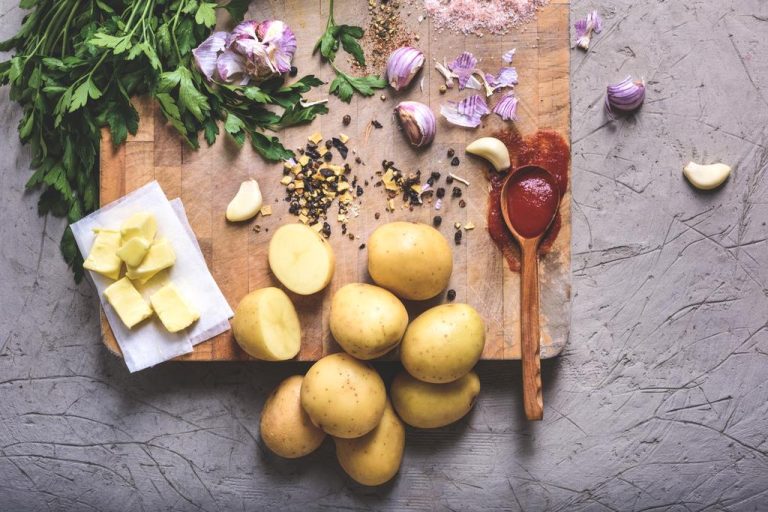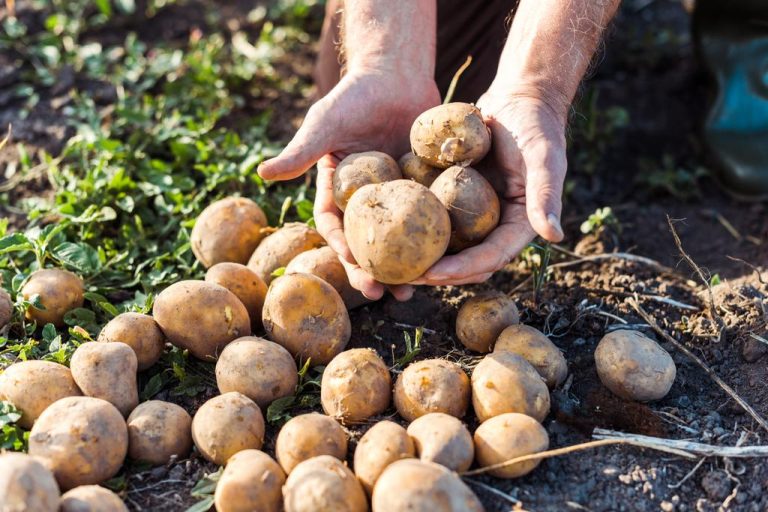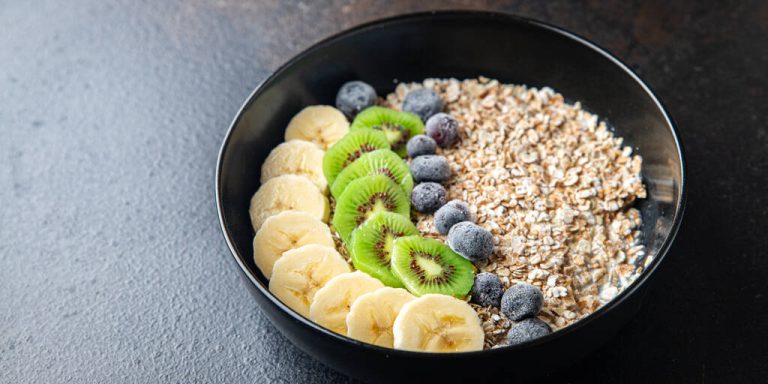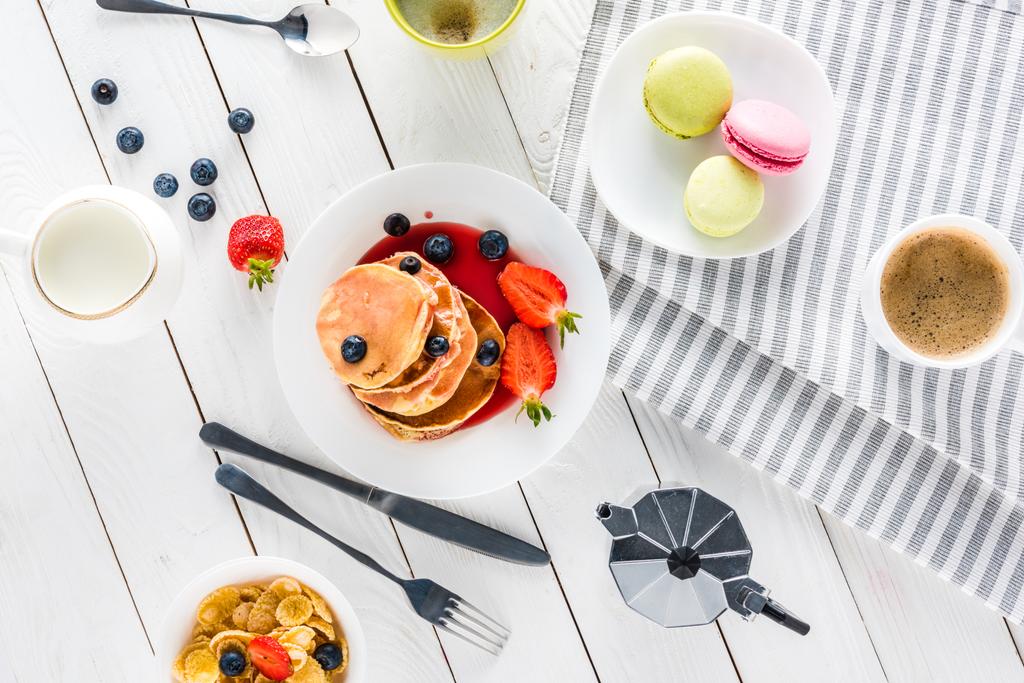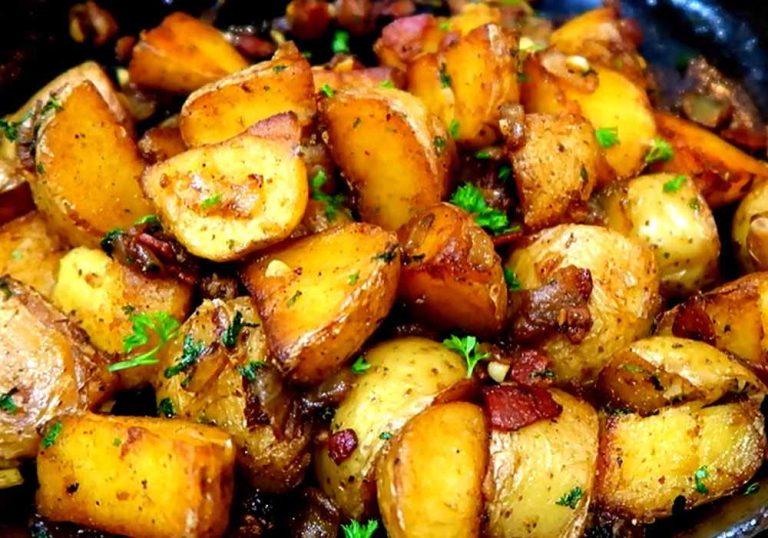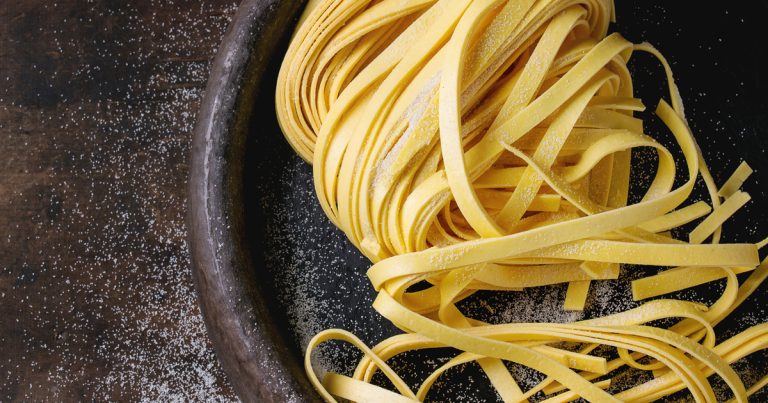Even as a child you learn not to eat raw potatoes. But what is behind it? Are raw potatoes toxic or even healthy? We have put together the most important information for you.
Eating raw potatoes – poisonous or not?
Anyone who has ever tried to eat potatoes raw will have noticed that they don’t taste very good. On the one hand, this is due to the starch, which uncooked has a very floury taste and is difficult to digest.
On the other hand, raw potatoes taste unpleasantly bitter. Like other nightshade plants (e.g. aubergines), they contain toxic alkaloids. In potatoes, it’s solanine. This toxin is a natural protection of the plant against putrefaction pathogens, pests, predators and fungal infestation.
A lot of solanine accumulates, especially under the skin and in green and germinating areas. Green potatoes can reach solanine levels averaging 35 milligrams per 100 grams. So, eating too much raw potatoes can be harmful. Possible symptoms of poisoning are, for example:
Nausea,
Vomit,
Diarrhea,
breathing problems and
Cramps.
Children are particularly at risk.
Store the potatoes properly to prevent them from sprouting and forming solanine. A dry, cool, dark place is best.
Proper handling of potatoes: Avoid solanine
It is therefore advisable not to eat potatoes raw. Boiled potatoes are usually edible. When you peel the potatoes, be sure to remove sprouted and green areas generously. Such spots indicate a high solanine value – potatoes that germinate strongly are not edible even after cooking: solanine is heat-resistant and does not become harmless even through cooking
Raw potatoes – are they healthy?
Even if you shouldn’t eat potatoes raw, eating a small piece of peeled raw potato probably won’t hurt. In juice form, raw potatoes may even have health benefits:
In the case of stomach problems such as heartburn, freshly squeezed potato juice can provide relief if taken regularly.
Raw potato juice contains a particularly large number of antioxidants because the phytochemicals have not been destroyed by heating.
There are raw foodists who like to eat raw potatoes. They point out that one would have to eat over five kilograms of raw and unpeeled potatoes before a lethal dose of solanine is reached. In principle, however, the frequent consumption of raw potatoes is not recommended.
Potatoes are so healthy
Potatoes are a very healthy food. They are a good source of carbohydrates and make you feel full for a long time. Due to the high water content of 80 percent, they are also low in calories. Potatoes contain high levels of protein, potassium, magnesium and iron, as well as vitamin B1, vitamin B2 and vitamin C. Potatoes contain folic acid, which supports cell renewal.
In addition, the potato belongs to the category of basic or base-forming foods. This means that when potatoes are metabolized in the body, bases are formed. In contrast to acid-forming foods, these have positive effects on the body.
In the case of gastrointestinal complaints such as diarrhea, mashed potatoes can have a calming effect. It is easily digestible and the starch content binds acids and toxins.

